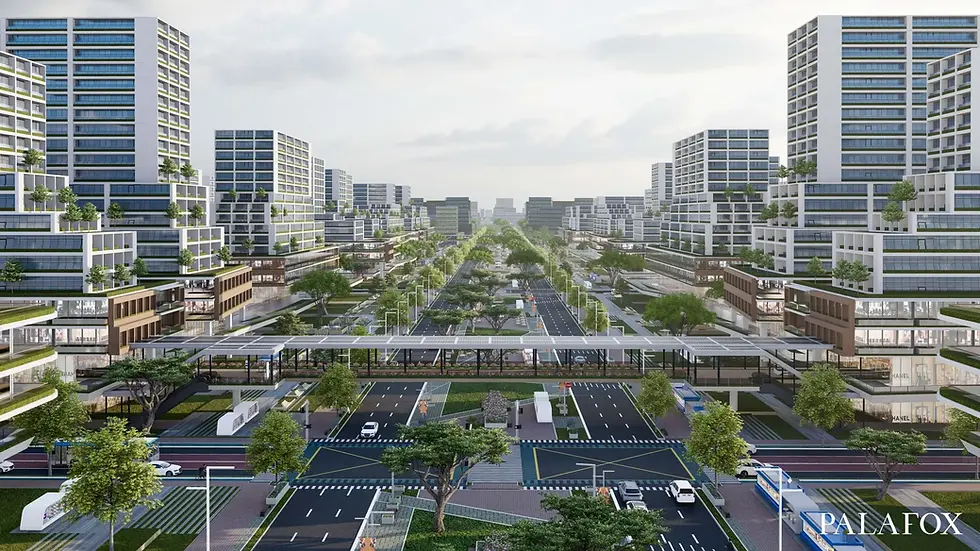The Rising Concern of a Blocked Tullahan River.
- CHLP REALTY

- Aug 14
- 3 min read
Understanding the Full Course of the Tullahan River.
Starts at La Mesa Dam / Reservoir in Quezon City, where excess water spills into the Tullahan, especially during intense rain and potential overflow events.
Flows through Calоocan, then Malabon, Valenzuela, and Navotas, before emptying into Manila Bay.
Entire length estimated at approximately 27.1 km (16.8 mi), though some sources note up to 36.4 km when including connected tributaries.

The Tullahan River is a river in the Philippines. It is located to the north of Manila and has an approximate length of 27.1 kilometers.
It starts at the La Mesa Reservoir in Quezon City and flows through Caloocan, Malabon, Valenzuela, and Navotas and empties into Manila Bay.
River Course Summary:
Source: La Mesa Dam / Reservoir (Quezon City)
Passes through: Caloocan → Malabon → Valenzuela → Navotas
Empties into: Manila Bay

Critical Transport Nodes Along the Blocked Tullahan River
In Malabon (nearest points):
Franco Clinic & Hospital (Letre Road) – 3 min walk (approx. 128 m)
Letre Road / Dagat-Dagatan Avenue – 4 min walk (approx. 250 m)
Malabon City Square (C-4) – 7 min walk (approx. 481 m)
Circumferential Road 4 stop – 8 min walk (approx. 565 m)
Pagamutang Bayan ng Malabon (Dagat-Dagatan Ave, Caloocan) – 10 min walk (approx. 729 m)
5th Ave LRT‑1 Station – 19 min walk (approx. 1,482 m)

In Navotas (river delta area):
Circumferential Road 4 (Navotas side) – 3 min walk (approx. 110 m)
M. Naval / Tanganahan Intersection – 5 min walk (approx. 217 m)
Circumferential Road 4 / Gen. P. Borromro – 8 min walk (approx. 518 m)
San Ildefonso, M. Naval – 10 min walk (approx. 668 m)
Abad Santos LRT‑1 Station – 10 min walk (approx. 774 m)

Impacts of a Blocked Tullahan River on Infrastructure and Transit
Flood Risk and Drainage Failures
River blockages—caused by sediment buildup, debris, or infrastructure failure—can lead to severe flooding in low-lying areas of Quezon City, Caloocan, Malabon, Valenzuela, and Navotas. Overflow from La Mesa Dam during heavy rains already amplifies the risk.
Disrupted drainage affects key transport access points: bus stops and LRT stations become unreachable or dangerous during floods, paralyzing commuter movement along the corridor.
Transport Network Disruption
Blockages compromise the reliability of bus and train services, particularly those closest to the river like Franco Clinic, Letre Road stops, Circumferential Road 4 stops, 5th Ave LRT, and Abad Santos LRT.
Infrastructure risk extends to bridges along the river corridor—e.g. MacArthur Highway, NLEX crossings, C‑4 and Pinoy rail overpasses—which may sustain damage or require closures if the river is blocked.

Delays in Transit Expansion Projects of a blocked Tullahan River
Ongoing infrastructure schemes—such as NSCR or PNR expansion—depend on stable river crossings. A blocked river could delay bridge construction or the opening of key stations in Valenzuela and surrounding areas.
Environmental Degradation and Urban Planning Concerns
Blockage leads to worsening water quality, stagnation, and ecosystem decay—compounding pollution in Manila Bay.
Impacted areas face higher long-term planning risk, particularly when factoring in urban resilience and future infrastructure expansion.

The blocked Tullahan River is more than just an environmental concern—it is a pivotal factor that influences flood control, transportation stability, and the success of infrastructure projects from La Mesa Dam to Manila Bay.
By recognizing the risks and addressing them through proactive river management, Metro Manila can safeguard communities, protect vital transit routes, and ensure that future urban development is both resilient and sustainable.
Continuous monitoring, timely interventions, and collaborative planning are essential to prevent the far-reaching consequences that a blocked Tullahan River could impose on the region’s progress.







Comments